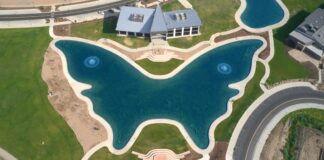By Michael Portero
From the September/October 2012 issue
This year’s Battelle/BIO State Bioscience Industry Development report highlighted significant job growth in the bioscience sector over the past decade, indicating the importance of the biosciences as an economic driver for the nation.
The fifth biennial report analyzed the industry’s impact on the economy, which includes a state-by-state analysis of the industry, reveals that in the first decade of the 21st century, the bioscience industry grew by 6.4 percent, adding more than 96,000 jobs. By comparison, total employment for all private sector industries in the U.S. fell by 2.9 percent, losing more than 3 million jobs. The majority of the jobs added were in research, testing and laboratories, adding 23.8 percent to the workforce or 87,000 jobs.
“Given the continuing concerns about job creation in the U.S., we are pleased to report an increase of more than 96,000 jobs in the bioscience sector since 2001, even after accounting for the impacts of the recent severe recession,” said Jim Greenwood, president and CEO of the Biotechnology Industry Organization (BIO). “The Battelle/BIO report highlights the long term expansion of our industry and the high-paying salaries of our researchers and scientists that are developing innovations and life-saving medicines.”
The U.S. bioscience industry weathered the recession much better than the overall economy and other leading knowledge-based industries. While national private sector employment fell by 6.9 percent from the outset of the recession in 2007 through the first year of the recovery in 2010, bioscience industry employment fell a mere 1.4 percent.
The strength of the bioscience industry is seen when compared to other leading knowledge-based industries, such as information technology services, aerospace, computer equipment and finance and insurance, all of which recorded net job losses during the same period.
The biosciences has a broad footprint across the nation: 34 states and Puerto Rico have an employment specialization (20 percent or more concentrated than the nation) in at least one of the five bioscience subsectors (drugs and pharmaceuticals, medical devices and equipment, research, testing and medical laboratories, agricultural feedstock and chemicals, and bioscience-related distribution).
The bioscience sector continues to be a source of high-wage jobs. The average bioscience job paid $82,697 in 2010, $36,000 more than the average private sector job.
Illinois Medical District Thrives
The Illinois Medical District (IMD) is a special-use zoning district located just west of the Chicago central business district. Created by law in 1941, the 560-acre environment is 24/7/365 and includes four medical pillars: Rush University Medical Center (Rush), University of Illinois Medical Center (Rush), John H. Stroger Jr., Hospital of Cook County (Stroger), and the Jesse Brown VA Medical Center (VA).
The District generates $3.3 billion in economic activity and $220 million in annual research. It is the nation’s largest urban medical district, employs 20,000 people, receives 75,000 daily visitors and is home to the nation’s largest college of medicine (UIC College of Medicine).
Examples of other District tenants include: Easter Seals of Metropolitan Chicago, the American Red Cross of Greater Chicago, FBI, GreatPoint Energy, Illinois State Police Forensic Science Center at Chicago, UIC College Prep and the Anatomical Gift Association.
The District is focused on expanding innovation in healthcare, medical science, information technology, biotechnology, medical devices, clean technology and supportive assisted living. To that end, the District has approximately 52 acres of land available for development, 42 of which are located in the District Development Area (DDA). This land is conveniently situated within the IMD’s boundaries and is located immediately adjacent to mature healthcare and university campuses. Additionally, the District has 10 acres of prime real estate available for development in the “Gateway” area of the Medical District, just steps away from the four pillars.
Bioinspire Blossoms in AZ
Bioinspire is Arizona’s first incubator dedicated to the development of medical devices. The groundwork for Bioinspire was created after the city of Peoria adopted its Economic Development Implementation Strategy in December 2010. A partnership between the city of Peoria, BioAccel, and the Plaza Companies was approved by the Peoria City Council in November 2011.

Bioinspire is located on the Plaza del Rio Campus, a 185-acre “medical hub” featuring 400,000 square feet of medical and healthcare offices and outpatient centers along with 1,000 beds of various components of senior living options. The campus will provide an environment for the growth of companies once they leave the incubator. Bioinspire consists of 6,800 square feet divided into four individual laboratories, one larger common laboratory (a unique feature providing laboratory access to tenants that do not require an individual lab), ten offices of various configurations providing for flexibility, a break room where tenants can connect and a shared conference room.
BioAccel® is a non-profit organization, that accomplishes its economic development mission by focusing on late stage research and technology; transforming research discoveries into new business opportunities with a focus on medical devices, tools, and services. As the management arm of Bioinspire™, BioAccel provides Bioinspire resident companies:
- Proof-of-concept funding up to $300,000 per company;
- Hands-on technical and business mentoring, strategic planning;
- Free and/or reduced commercial space at Bioinspire
- Ability to take advantage of shared resources, including centralized FDA Quality Control System, access to Solidworks (CAD software), and basic shared lab equipment; network of consultants.












![[VIDEO] Get More for Your Business in Ardmore. Oklahoma](https://businessfacilities.com/wp-content/uploads/2024/02/maxresdefault-324x160.jpg)
